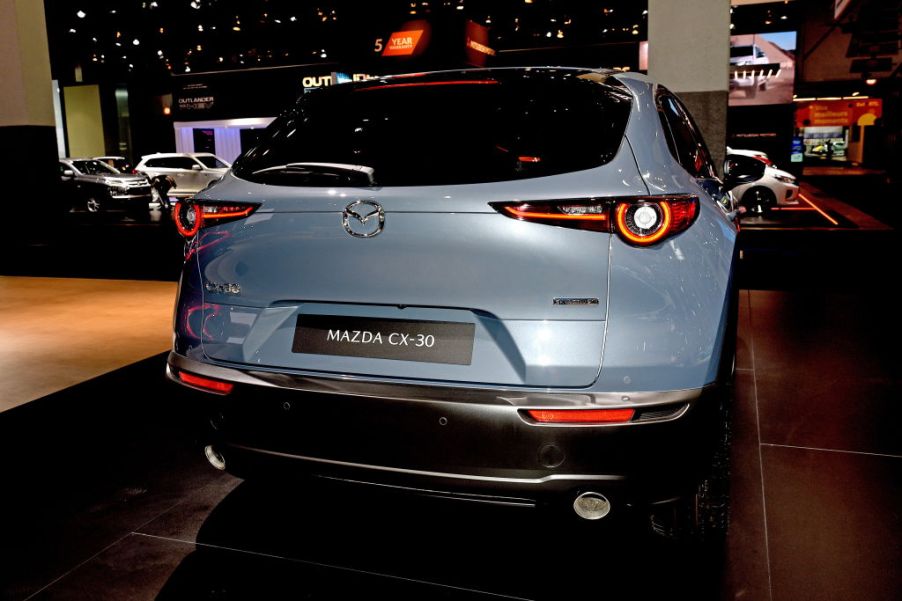
What’s the Difference Between the Mazda CX-3 and the Mazda CX-30?
While Mazda is perfectly happy with making great cars right now, it’s also happy making great SUVs. Mazda makes some of the best SUVs on the market such as the CX-5, but it isn’t done yet. Mazda’s latest SUV, the CX-30, is different than the CX-3, and it aims to win over customers once again.
What’s similar between the Mazda CX-3 and the Mazda CX-30
As its name would imply, Mazda wants customers to think of the CX-30 as the bigger brother of the CX-3. Indeed, they actually have quite a few similarities, according to MotorTrend. Off the bat, in terms of segment, they’re technically competing in the same segment. Both Mazdas are considered subcompact crossovers.
In terms of smart safety systems, Mazda has drivers covered as both the CX-3 and the CX-30 have the same smart safety suite as standard. MotorTrend said that both SUVs come with the i-Activesense smart safety suite. This smart safety suite gives owners smart safety features such as forward-collision warning, automatic emergency braking, lane departure warning, lane keep assist, adaptive cruise control, and more.
Additionally, in terms of their crash test results, both SUVs did really well, according to MotorTrend. Both SUVs got the highest marks in their crash tests, and as a result, they got some of the highest grades possible.
What’s different between the Mazda CX-3 and the Mazda CX-30
That said, they do have plenty of differences, according to MotorTrend. While they’re in the same segment, the Mazda CX-30 is indeed larger than the CX-3. In terms of their overall dimensions, the CX-30 is several inches longer, wider, and taller than the CX-3. The result is, as MotorTrend said, a larger and more spacious cabin in the CX-30.
This extra space means extra weight, which means that the Mazda CX-30 needs extra power, and Mazda indeed gave it more power than the CX-3. The CX-30 only has one engine option, and it’s a 2.5-liter four-cylinder that gets 186 hp. This is more powerful than the CX-3’s 2.0-liter four-cylinder which gets 148 hp. As a result, the CX-30 is also faster than the CX-3, and MotorTrend said that it handles quite well too.
But, the extra space doesn’t necessarily mean that the Mazda CX-30 has extra stuff. The CX-30 does come with a larger standard display, but it actually has less standard equipment. The CX-30 has an 8.8-inch display as standard, but Apple CarPlay and Android Auto aren’t standard. The CX-3, meanwhile, gets a 7-inch touchscreen display with Apple CarPlay and Android Auto as standard.
You will need to choose the Mazda CX-30’s Select trim if you want Apple CarPlay or Android Auto. This is another difference between the two. The CX-30 is simply pricier than its little brother. The CX-3 starts at under $22,000, while the CX-30 starts at $23,000.
Can Mazda do better?
While both cars are pretty good SUVs, Mazda can do better, and Mazda already has. As MotorTrend said, the CX-5 is the most popular SUV of these three Mazda offerings and for good reason. It has more options, it’s roomier, and it’s just as safe as its siblings are.
In general, even though the Mazda CX-30 is a bigger version of the CX-3, the CX-5 is a bigger version of the CX-30. The things that customers are looking for in the CX-30 can probably be found in the CX-5. However, the CX-5 starts at $26,000, which means that it costs about $3,000 more than the CX-30 does. This is the main reason why customers may consider buying the CX-30 instead of the CX-5 as it’s a significantly more affordable option.



